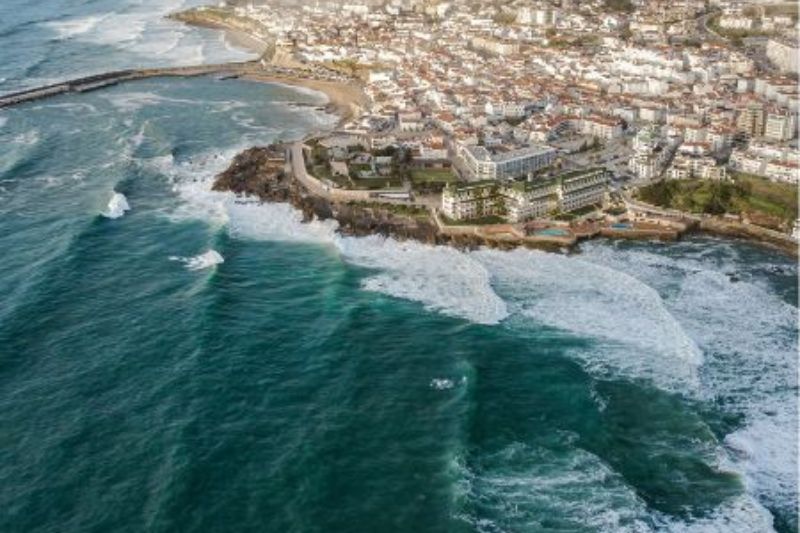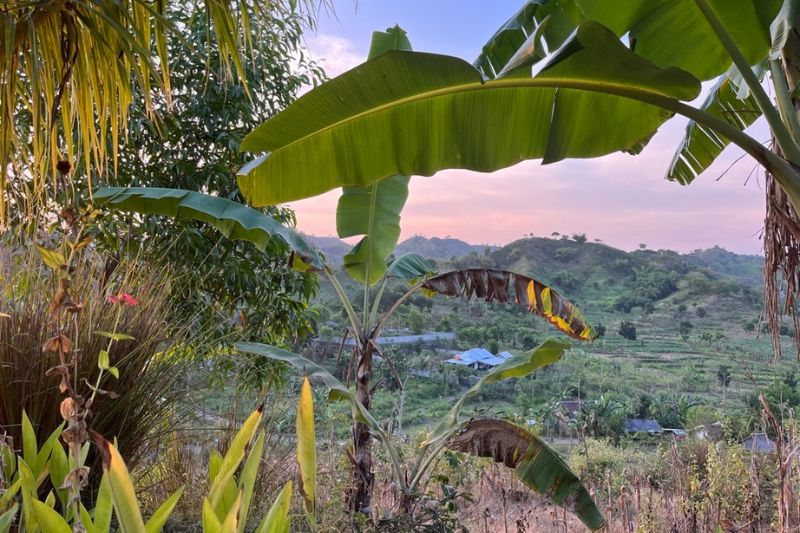There’s no denying that South Africa is one of the best countries for digital nomad surfers. Experiencing nomadic life on this side of the globe will leave you spoilt for choice with excellent waves for all levels, kind locals, natural beauty and lekker local cuisine.
At the southern tip of Africa you’ll find 3,000 kilometers of coastline offering year-round surf if you’re venturesome. Boasting a mild climate and plenty of co-working spaces, there is no reason why you shouldn’t consider traveling to South Africa to enjoy surfing while working remotely.
Let’s dive into digital nomad surfer life here, starting with what you need to know before you get going. We’ll share three of the top digital nomad surf locations in South Africa, including the overall vibe for each location, the best time of year for swell, the top waves to charge, and the cafés and co-working spaces to check out.
South Africa- What You Need to Know

The Vibe:
South Africa is a feeling – with vast amounts of interesting history, rich cultural heritage, natural diversity, and modern to rustic developments, you are sure to be immersed in unique experiences and an energy that will captivate you.
Safety:
Yes, South Africa has crime, but you don’t need to feel unsafe. Security measures have advanced greatly over the years, especially in popular areas such as near the beaches. Be conscious of your surroundings and be vigilant with your valuables and you will have a safe experience. For more info, check out these great safety tips for traveling in South Africa.
Visa:
You can apply for a digital nomad visa for South Africa which allows you to work in the country for up to 36 months. The visa can be applied for under “Remote Working South Africa” from the Department of Home Affairs.
>>Looking for other surf countries offering digital nomad visas? We’ve made a list of them here.
Internet:
The average internet speed in South Africa is around 36.64 Mbps. That being said, South Africa carries a vast range of internet speeds. Most cities and towns have fiber and high-speed internet which supports video calls, while more remote areas may have slower speeds. Several cafés and accommodations will offer high speed Wi-Fi, however, it’s best to call and check first whether it meets your requirements.
I personally stay in a village outside Gqeberha where I have a download speed of 62 and upload speed of 35 on a basic LTE plan, which supports me to run video calls everyday without issue.
Load Shedding:
Load shedding is a planned power cut. Unfortunately, this happens in South Africa, due to either high demand on the national power grid, or equipment failures and breakdowns. These power cuts happen on schedule and can last 2-4 hours at a time. There are various apps where you can find out the times if load shedding is active during your stay.
Over the past year, investment in infrastructure in South Africa has gained momentum, and power lines are better maintained than they were in the past. In the event of a power outage, most accommodations and public places will have a backup plan to keep the lights and the Wi-Fi running.
Staying Connected:
Power banks and portable Wi-Fi will allow you freedom of choice and some stunning backdrops for your workday. Living in South Africa, I’ve witnessed digital nomads in J-Bay set up at the picnic benches with a takeaway coffee, getting some work done while they watched the sets – truly living the dream.
If you want the freedom to cruise to rural areas and remote beaches, here’s how I suggest to prepare:
- Local Sim – Vodacom and MTN are the main providers in South Africa
- Portable Wi-Fi – You can pick these up from Vodacom or MTN stores along with the SIM card
- Power bank – Either bring a power bank with you from home, or purchase one from any camping or outdoor store. Check out places like Makro or Outdoor Warehouse for outdoor adventure gear.
Gear Tip: travel adaptors – South Africa has different power outlets compared to many other countries. Make sure to check your device’s cables if you need a travel adapter to be compatible with South African power outlets.
Top Locations to Surf and Work Remotely in South Africa
While South Africa has endless surf destinations to offer, we have compiled three legendary areas for you to consider based on having epic surf and being digital nomad-friendly. Visiting them all is convenient as you can travel from Cape Town in the Western Cape through the Garden Route and onto J-Bay in the Eastern Cape all along the coastline. This is one of the most beautiful routes to drive by car, and you may even find some hidden secret bays along the way.
Let’s get into the main reasons why you need to put these three South African destinations on your bucket list.
1. Cape Town: The Mother of Beauty, Cultural Diversity and Waves

Marked as one of the best destinations for digital nomads, Cape Town offers a broad diversity of experiences. From climbing Lions Head and seeing the most spectacular sunsets, to exploring Robben Island where Mandela was held captive, you are sure to be busy in this bustling metropolis.
With Cape Town being so popular for nomads and tourists alike, there is no shortage of good accommodation, magnificent restaurants, coffee shops, and co-working spaces.
Cape Town offers an extensive variety of waves to ride from grom level to advanced big wave surfing. The waves are often best in the morning and you will find loads of cafés close to popular breaks, creating ample convenience for a surf and remote work lifestyle.
Experience Level: Beginner to advanced
Popular Spots: Big Bay, Long Beach, Muizenburg, Glen Beach, Derdesteen, Llandudno, Scarborough, Kalk Bay
Best for Beginners: Muizenberg (Muzies) break in False Bay, which offers a chilled left and right which work all year. This well-kept beach is equipped with amenities and cafés to work from.
Best Time of the Year: May-August offers the best swells and mild weather.
Average water temp: With the Atlantic currents, the average temperature can range from roughly 16 -22°C or 60 -71°F in the summer, while winters can drop down to an average of 14-18°C or 57 -64°F.
Recommended Workspaces: Whether you choose to work in town or near your favorite surf spot, you won’t have trouble finding a place to hang out and do some work while enjoying a good coffee or a decent meal. Off Two Wonder has compiled a great list of 21 coffee shops they recommend for working remotely.
Cape Town is also loaded with co-working spaces, with Cape Town Office and Roam Work being highly rated for digital nomads.
2. Garden Route: Natural Shorelines, Forest Backdrops, and All-Around Adventures

Want to experience one of the most beautiful parts of the country, offering a magnificent range of nature and surf spots for days? Enter the Garden Route, boasting some great right-handers along the stretch from Still Bay to Natures Valley. The G-route offers a variety of setups from gnarly open beachies to beautiful, protected bays.
When you’re not surfing, explore the Tsitsikamma forest or, if you’re a real adrenaline junky, jump off Africa’s highest bridge at Bloukraans Bungy or try the world’s longest over-ocean zipline in Mossel Bay.
Experience Level: Beginner to advanced
Popular Spots: Still Bay, Mossel Bay, Herolds Bay, Victoria Bay, Buffalo Bay, Wilderness Beach, Plett, Natures Valley.
Hello Garden Route will guide you on the local surf as well as accommodation options in the area.
Best for Beginners: Some of the bays, like Mossel Bay, Victoria Bay, and Buffalo Bay offer areas where beginners can surf quite comfortably while other spots can be a bit gnarly. I recommend speaking to the locals to find out how the different spots work on different swells to help navigate the options based on the conditions.
My personal favorite for beginner waves is Buffalo Bay, as there’s always a place where the break is gentler, and you will find surfers of all levels here, lowering the intimidation factor.
Best Time of the Year: May through to August, although there are good waves to be found year-round at various locations.
Average Water Temp: The temperatures are not extreme along the Garden Route. Average ranges are about 19 -23°C or 66 -73°F in summer to about 16-18°C or 60 -64°F in winter.
Recommended Workspaces: This entire stretch of coast accommodates a high level of tourism, and most coffee shops or restaurants will offer you a place to work. Some places like Victoria Bay are more secluded and may only have 1 coffee shop in the area. Others, like Plettenberg Bay, have a multitude of spots to work from. Coworking spaces can be found in the more built-up towns like Plettenberg Bay, Knysna, and George.
3. Jeffreys Bay: World Famous Breaks and Hollow Tubes

The home of legendary waves, this famous small town is one of the most popular surf travel hotspots for remote workers. Expect to find chilled-out holiday vibes, less hustle and bustle, and barrels you’ll never forget. If you come to South Africa to surf, there is no way you can miss out on visiting J-Bay.
J-Bay is also just a 25-minute drive from the surfing and fishing village St. Francis Bay, home to the famous wave, ‘Bruces Beauties’ named after Bruce Brown, the American film producer of The Endless Summer.
Experience level: Beginner to advanced
Popular Spots: Point, Boneyards, Supertubes, Tubes, Albatross, Magna Tubes, Kitchen Windows, Dolphin Beach.
Best for Beginners: Dolphin Beach has a slow left and right, a forgiving break for those learning the ropes.
Best Time of the Year: The full season runs from April to September, but for the best swell, June through to August is the time to hit it.
Average Water Temp: Nice and warm in summer, and fresh in winter. Average ranges are about 20 -26°C or 68 -79°F in summer while winters can drop to around 18-21°C or 64 -70°F.
Recommended Workspaces: J-Bay offers endless options of cafés to work from, many within walking distance of the beach. Check out INFOOD, First Light Coffee, and Nina’s for great food and Wi-Fi. J-Bay has some epic co-working spaces that are designed around ocean-minded individuals. Greenroom Jbay offers co-working and co-living options right in the surf village.
Conclusion
South Africa is hands down one of the greatest countries to travel to for epic surf experiences and loads of hidden surf spots for nomads to experience. If you’re excited by natural beauty, cultural experiences, and hollow barrels, then pack your board and your bag. If you’re looking to start living the digital nomad surfer lifestyle, check out our article on How to Become a Digital Nomad Surfer, and our Digital Nomad Surfer Stories for tips and inspiration.


